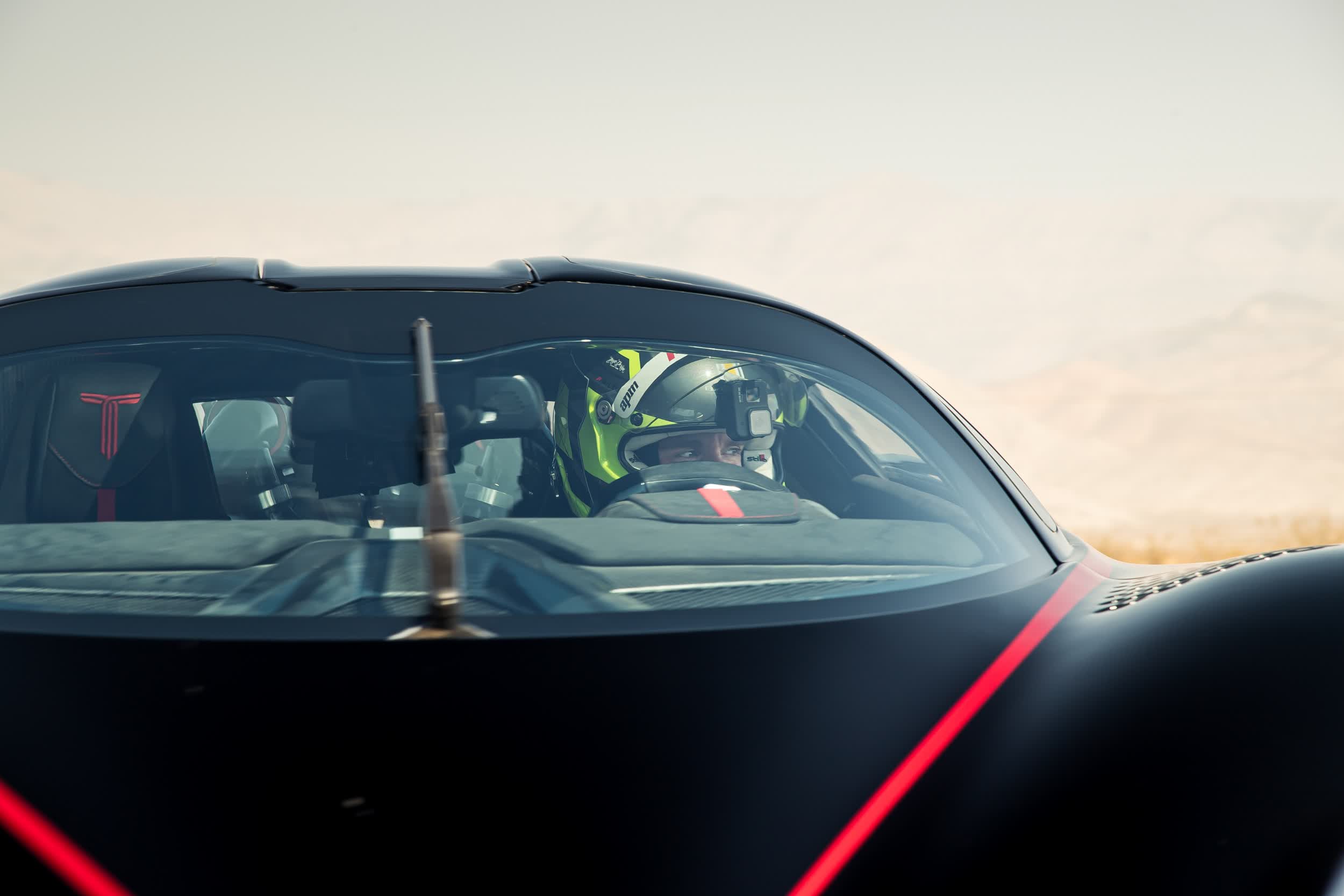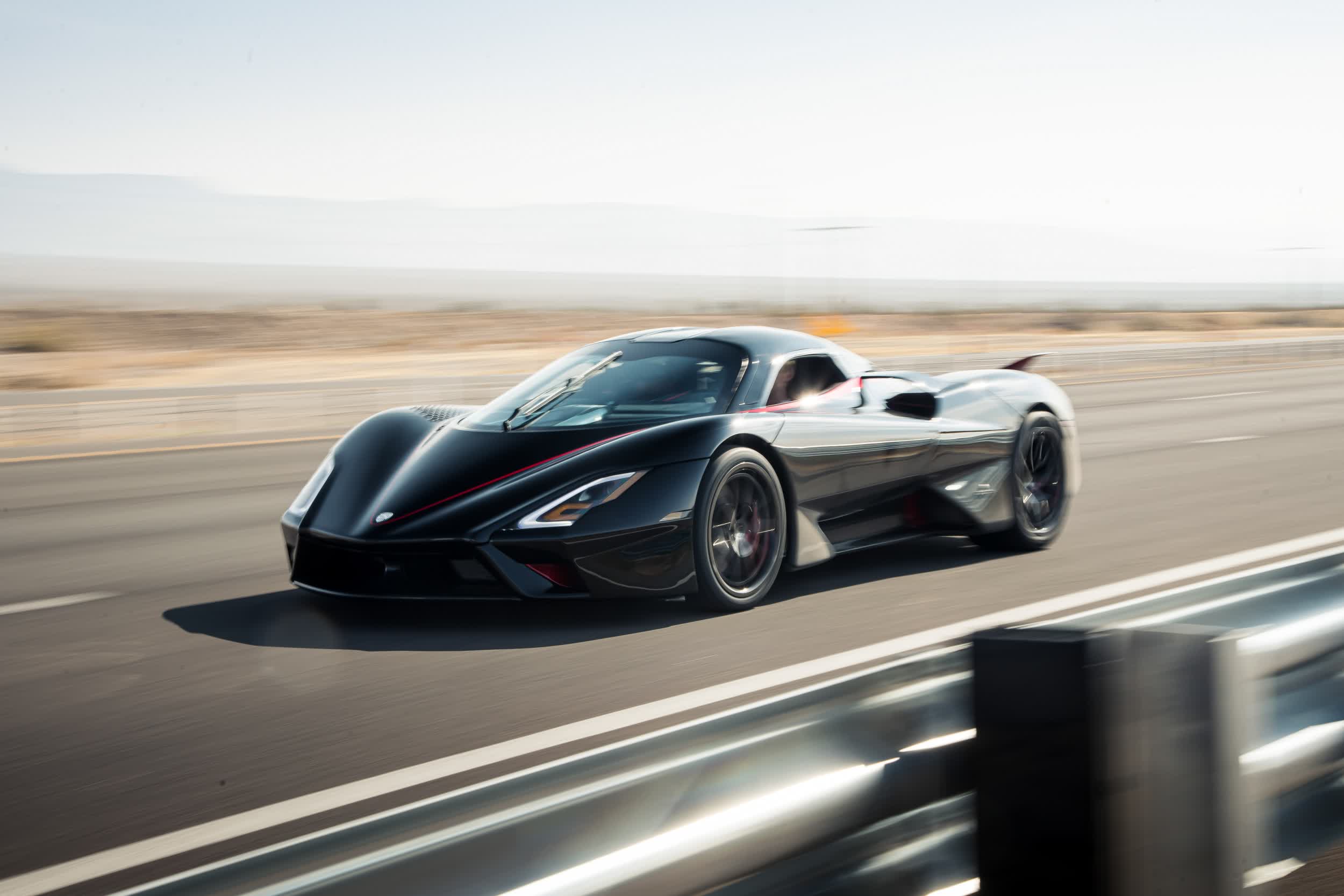A hot potato: SSC could solve all of this simply by releasing raw data from even one of its cameras pointed at the road and the GPS equipment used to log the run. Don't try to make a big, Hollywood-style production of it, just show us the raw data to back up the claim.
American hypercar company SSC North America last week claimed to have broken the record for the world's fastest production vehicle. With an average speed of 316.11 mph between two consecutive runs (the faster of which was reportedly a blistering 331.15 mph), it seemed as though SSC had indeed shaken up the hypercar world.
A video (or perhaps, more than one) was even supplied of the feat, but upon further inspection, Internet sleuths found some inconsistencies with the footage. SSC has since responded.
YouTuber Shmee150 published a video on the matter earlier this week in which he points to several bits of evidence that seemingly discredit what we were shown in Top Gear's "exclusive" video (the very one we shared here). It brings up a lot of interesting points, such as the fact that the vehicle's speedometer is blurred for much of the run.
Shmee150 also gets into the math, calculating how the run possibly couldn't have happened as depicted based on landmarks in the video cross-referenced with Google Maps data of the stretch of road the run took place on. Conveniently enough, it's the same bit of road that Koenigsegg used for its Agera RS run in 2017.
SSC founder Jerod Shelby said in a press release that the "depiction of the speed run, in video form, had been substantially incorrect."
On October 19, the day the news broke, we thought there were two videos that had been released – one from the cockpit, with data of the speed run overlaid, and another video of b-roll running footage. The cockpit video was shared with Top Gear, as well as on the SSC and Driven+ YouTube pages.
Shelby went on to note that there was a mixup on the editing side, "and I regret to admit that the SSC team hadn't double checked the accuracy of the video before it was released. We also hadn't realized that not one, but two different cockpit videos existed, and were shared with the world."
When hypercar fans cried foul over the discrepancies, SSC didn't immediately respond because they had not realized the inconsistencies - that there were two videos, each with inaccurate information - that had been shared.
At first glance, it appears that the videos released have differences in where the editors had overlaid the data logger (which displays speed), in relation to the car's location on the run. That variance in 'sync points' accounts for differing records of the run.
While we had never intended for the video captured to play the role of legitimizing the run, we are regretful that the videos shared were not an accurate representation of what happened on October 10.
The company SSC partnered with for the video work, Driven Studios, does reportedly have extensive footage of everything that transpired on that day and is working to "release the actual footage in its simplest form." That'll be shared as soon as it is available, we are told, but no date for when that might happen was provided.

Shelby also posted information about the vehicle's gear ratios and the tires used, as well as other aerodynamic specifications.
In a follow-up with Top Gear, had the following to say when asked about the speedometer, the telemetry feed and what can (at times) be seen on the laptop screen in the vehicle:
"We became aware during testing the week leading up to the record attempt that the driver display was off by approximately 14-15mph at 200mph. We were not sure how inaccurate the display would be at 300mph and beyond and we had always planned on relying solely on the precision of the satellite data to record and display speed since we knew the driver display speed would not be as accurate at those speeds. The original design specification for the driver display had a maximum top speed reading of 301 because beyond our record run we never envisioned someone trying to go that fast! But rest assured, regardless of whether or not our customers will ever try to achieve over 300mph, chassis #1 and all future Tuataras will be programmed to read up to 350mph."
I also have to question why the video they shared (the one from Top Gear's YouTube channel) was from a 360-degree camera. In my experience, these cameras produce terrible image quality which is exactly what I'm seeing in the video. It's so bad that you can't even hardly make out what is on the laptop screen most of the time.
Dewetron, the company that makes the GPS equipment used in the run, had the following to say in a press release published on its website:
Despite publications on several websites and social media channels, Dewetron neither approved nor validated any test results for the world record attempt by SSC Tuatara captured on the video. No Dewetron employee was present during the record attempt or its preparations.
The driver, Oliver Webb, released the following video in Instagram about the event.
One last thing I'd like to comment on is how effortlessly the Tuatara hit 331 mph. Even if the footage is stitched together as SSC claims, the telemetry – whether captured at that exact moment or from a different run – should still be from that vehicle.
Based on that telemetry, the car still appears to be climbing in speed at a fast rate. Why stop there? Why not shift into the next gear and keep going higher for an even more impressive run?
